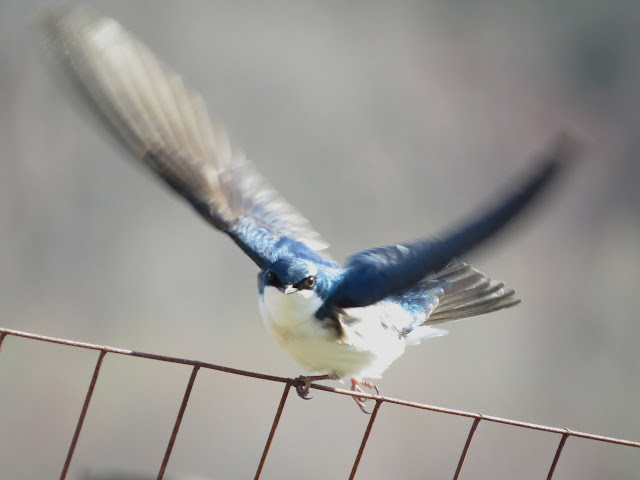It sounds grim, I know. But, on the bright side, there are lots of people who are helping them, too!
From the federal government to grassroots supporters, people are coming to the aid of Monarchs.
In this article I cut from a newspaper last year, it states that Monarchs had experienced a 90% decline in population, with the lowest recorded numbers occurring in 2013-14. The US Fish and Wildlife Service was considering putting them on the endangered species list. Just like when our Eastern Bluebirds were in serious trouble, people are stepping up to help.
I picked up the brochure in the photo above at the Wetlands Institute in Stone Harbor, NJ. They have a large butterfly garden out in front of their building, and inside they have this:
As they find eggs or caterpillars on their milkweed plants, they bring them inside to protect and raise, then they tag and release them.
I'm not going to go into the details of the Monarch life cycle, but if you'd like to read about it at one of the best websites I've seen, you can click here.
Now, I want to tell you about my own Monarch story. Our family has loved them for a long time. When my girls were young, they enjoyed raising a caterpillar or two and releasing the butterflies after they emerged from their chrysalises.
There's a butterfly / dolphin enthusiast!
And a nice handling method!
I had not raised any caterpillars for long time, preferring to let nature take its course. This year I changed my mind - because Monarchs are in trouble and particularly because some of ours were in trouble!
While my husband had done a good deed for me and staked off the best of our local milkweed colony, there were still milkweeds scattered here and there in the hayfields which were destined to be mowed for mushroom hay.
 |
| Thank you, honey. |
So, I kept checking and found several Monarch caterpillars in the 'danger zone'.
The easiest way to find them is to look for chewed leaves or frass (a fancy way of saying caterpillar poo).
You could also find eggs, but they are very tiny so you'd have to look carefully. The 'cats' can vary in size, depending on which 'instar' they are in (they go thru 5).
I brought them back and set them up in a special habitat... basically providing them with milkweed to eat and keeping the container clean.
They will eventually look for a place to pupate and attach themselves by a silken mat. In the next photo, you can see the one on the right working on this, and the other one already in the pupa stage.
Then, the 'cat' will hang in what is called the "J position" for awhile.
Here's another viewpoint:
I was really glad I brought these caterpillars in, because before all the above took place, this happened...
Those caterpillars were on milkweed that was right in the front and center of that photo!
If you are interested in learning more about how you can help Monarchs, here is a link to the Fish and Wildlife Service webpage that has lots of information. There are also several Facebook groups; where those 'grassroots' people I wrote about earlier share information on raising and helping Monarchs.
While I was not lucky enough to see a caterpillar go into a pupa... I did get to watch one emerge as a butterfly! Of course, I took lots of photos to share with you... so 'stay-tuned' for my next post!
PS - If you want some Common Milkweed seed to grow your own Monarch garden, let me know... we have lots!
Though I'll have to harvest some before it all flies away!






















































